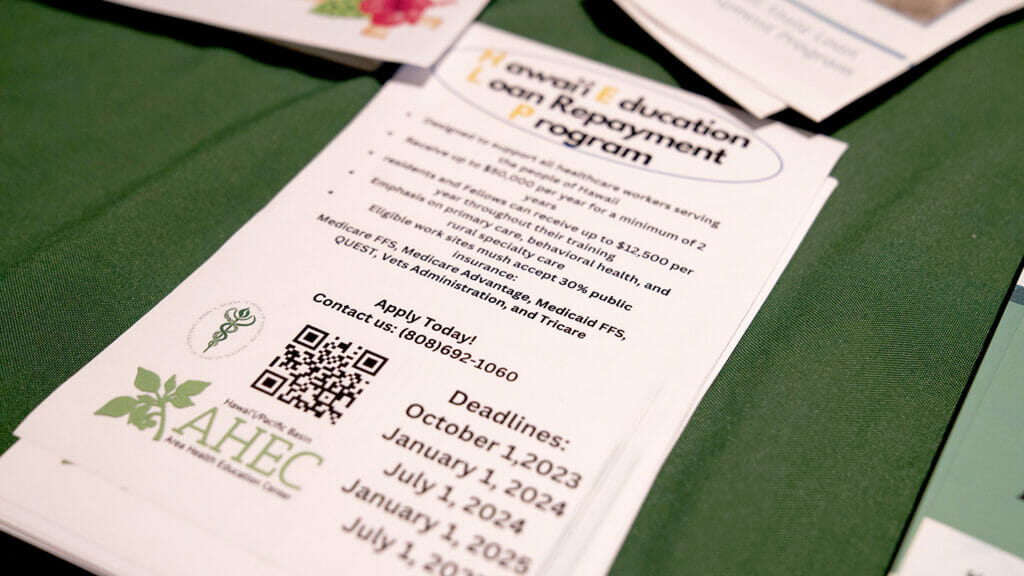
A student loan repayment program is being launched in Hawaii to address the growing shortages of healthcare professionals in senior living and other settings across the islands.
The Healthcare Education Loan Repayment Program, or HELP, will provide an “unprecedented” $30 million in fiscal years 2024 and 2025 for student loan repayments to senior living health professionals — including licensed practical nurses, nurse aides and registered nurses — as well as other healthcare professionals in exchange for two years of service in the state’s healthcare facilities, according to Hilton Raethel, MPH, MHA, president and CEO of the Healthcare Association of Hawaii, which represents assisted living communities, residential care homes, nursing homes, home health agencies and other healthcare providers.
The program was developed by the Healthcare Association of Hawaii, the John A. Burns School of Medicine and the state Department of Health, and was funded by the state legislature. The program will provide $10 million for fiscal year 2024 and $20 million for fiscal year 2025, with the intent to seek additional funding from legislators in 2025, Raethel said.
HELP builds on the federally funded, state-matched $2 million Hawaii State Loan Repayment program by reaching a larger group of healthcare professionals.
Healthcare workers can qualify for loan repayments ranging from $12,500 to $50,000 each year. Loan repayment amounts will vary based on profession, practice location and amount of debt. Priority will be given to primary care and behavioral health specialists, along with those practicing in rural areas. Raethel said that healthcare workers in those targeted areas can qualify for up to $50,000 in student loan repayments for five years if they meet the eligibility requirements and commit to working in the state for that length of time.
“The goal is to get people to put roots down in Hawaii,” Raethel told McKnight’s Senior Living, adding that recipients could take the money they were using to pay down student loan debt toward housing. “Any of this will impact a material number of individuals already working in long-term care institutions, or individuals we’re recruiting to work in long-term care institutions.”
The state expects HELP to improve recruitment and retention of providers serving vulnerable populations, as well as those in medically underserved areas, while lessening the individuals’ burden of large educational debt. Applicants must care for individuals, or work for healthcare organizations, that accept public insurance for at least 30% of their resident/patient care claims, including Medicare, Medicare Advantage, Medicaid and Veterans Administration.
Kelley Withy, MD, MS, PhD, Hawaii-Pacific Basin Area Health Education Center director, said that the federally funded, state-matched state loan repayment program has one of the highest retention rates in the country, with 65% of recipients continuing to practice in their health professional shortage areas and underserved sites. And 80% of program-completers still practice in the state.
“Our program works, and we are grateful to the 2023 legislature for continuing the matching funds for this federal program that targets the highest shortage areas and specialties,” Withy said.
The Hawaii-Pacific Basin AHEC administers the program. Applications will be accepted twice a year, in October and April, with awards given out in January and July.
Workers shortages persist
Hawaii has a shortage of 4,000 healthcare professionals, particularly among medical, dental, behavioral and mental health professionals, with demand for primary care physicians, behavioral health providers and specialty physicians practicing in rural areas.
Raethel said that long-term care providers in the state continue to face considerable staffing shortages due to increased patient levels at hospitals, which are hiring long-term care staff members to meet their needs. HAH launched the Healthcare Workforce Initiative in 2018 to better understand employment needs across the state’s healthcare continuum. A 2022 report updated initial research.
Through collaborative partnerships with education, healthcare and community-based sectors, HAH created an entry-level certification pipeline for CNAs and other healthcare positions, designed an LPN pilot program, launched a high school healthcare certificate program for students in underrepresented public schools and committed to a $35 million workforce development initiative to build career pathways for Hawaii residents in the healthcare, technology, clean energy, skilled trades and creative industries.


